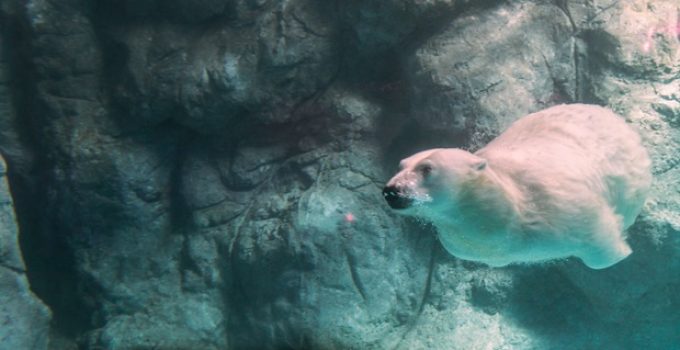Can Bears Swim?
Yes, bears can swim—and many are excellent swimmers. In fact, some bear species, like polar bears, are so well adapted to water that they rely on swimming to hunt and survive. Even black and brown bears, who are primarily land-based, can cross lakes and rivers with surprising endurance and ease. Swimming plays an important role in foraging, travel, and thermoregulation across bear habitats.
Dive Deeper
- Which Bears Swim—and Why
- Swimming Styles and Physical Adaptations
- How Far Can Bears Swim?
- Table: Swimming Abilities by Bear Species
- 🎯 Final Thoughts
- 📚 References
Which Bears Swim—and Why
Most bear species are capable swimmers, but how often they swim depends on habitat and necessity:
- Polar bears (Ursus maritimus) are semi-aquatic, spending much of their life on sea ice and in frigid waters
- Grizzly/brown bears (Ursus arctos) swim across rivers and lakes during migration or to access food
- Black bears (Ursus americanus) are surprisingly agile in water and often swim to escape predators or reach isolated food sources
- Asiatic black bears, sloth bears, and sun bears can also swim, though they do so less frequently
🐾 According to the U.S. Fish and Wildlife Service, all North American bear species can swim, including crossing rivers over a mile wide [1].
Swimming Styles and Physical Adaptations
Bears typically use a dog-paddle stroke, keeping their heads above water while propelling with all four limbs. Though bulky on land, their anatomy helps them in water:
- Large, flat paws function like paddles
- Fat reserves provide buoyancy
- Strong muscles power long-distance movement
- Polar bears have partially webbed front paws, ideal for aquatic locomotion
🧬 A study published in The Journal of Experimental Biology noted that polar bears’ elongated bodies and large paws increase swimming efficiency in Arctic waters [2].
How Far Can Bears Swim?
The distance bears can swim varies significantly by species:
- Polar bears have been recorded swimming over 60 miles (100 km) in a single stretch
- One female polar bear swam 426 miles (687 km) over 9 days in search of sea ice—a record-breaking journey with significant energy costs [3]
- Grizzlies and black bears can swim several miles across lakes and wide rivers, though they typically don’t travel as far
📊 According to the U.S. Geological Survey, polar bears may swim for hours at a time, particularly as sea ice becomes more fragmented due to climate change [4].
Table: Swimming Abilities by Bear Species
| Species | Swimming Skill | Typical Use of Swimming | Max Reported Distance |
|---|---|---|---|
| Polar Bear | Excellent | Hunting, traveling, survival | 426 miles (687 km) [3] |
| Grizzly/Brown Bear | Very Good | Migration, accessing salmon, escape | ~5 miles [1] |
| Black Bear | Good | Foraging, crossing rivers, predator avoidance | ~2–3 miles [1] |
| Asiatic Black Bear | Moderate | Occasional foraging or movement | Unknown |
| Sloth/Sun Bears | Adequate | Tropical water crossings if needed | Rarely documented |
🎯 Final Thoughts
So, can bears swim? Absolutely—and in some cases, exceptionally well.
- Polar bears are adapted to long-distance swimming and rely on it to hunt and survive
- Grizzlies and black bears swim effectively, using water to travel or escape
- Bears use dog-paddle techniques, leveraging strength and buoyancy
- Swimming ability varies by species, habitat, and necessity
As their habitats change—especially in the Arctic—swimming has become a critical skill for survival, not just mobility. Understanding bear swimming behavior also helps scientists track movement patterns, health, and the impacts of environmental stress.
📚 References
- U.S. Fish and Wildlife Service. “Bear Basics: Swimming and Survival.” FWS.gov, 2023.
https://www.fws.gov/story/2023-05/bear-basics-swimming - Fish, F. E., & Baudinette, R. V. “Mechanics of Swimming in Bears.” The Journal of Experimental Biology, vol. 203, 2000, pp. 2581–2587.
https://doi.org/10.1242/jeb.203.17.2581 - Durner, G. M., et al. “Long-Distance Swimming by Polar Bears in the Southern Beaufort Sea.” Polar Biology, vol. 34, no. 8, 2011, pp. 1095–1105.
https://doi.org/10.1007/s00300-010-0952-2 - U.S. Geological Survey (USGS). “Polar Bear Research in a Changing Arctic.” USGS.gov, 2023.
https://www.usgs.gov/news/polar-bears-and-sea-ice
